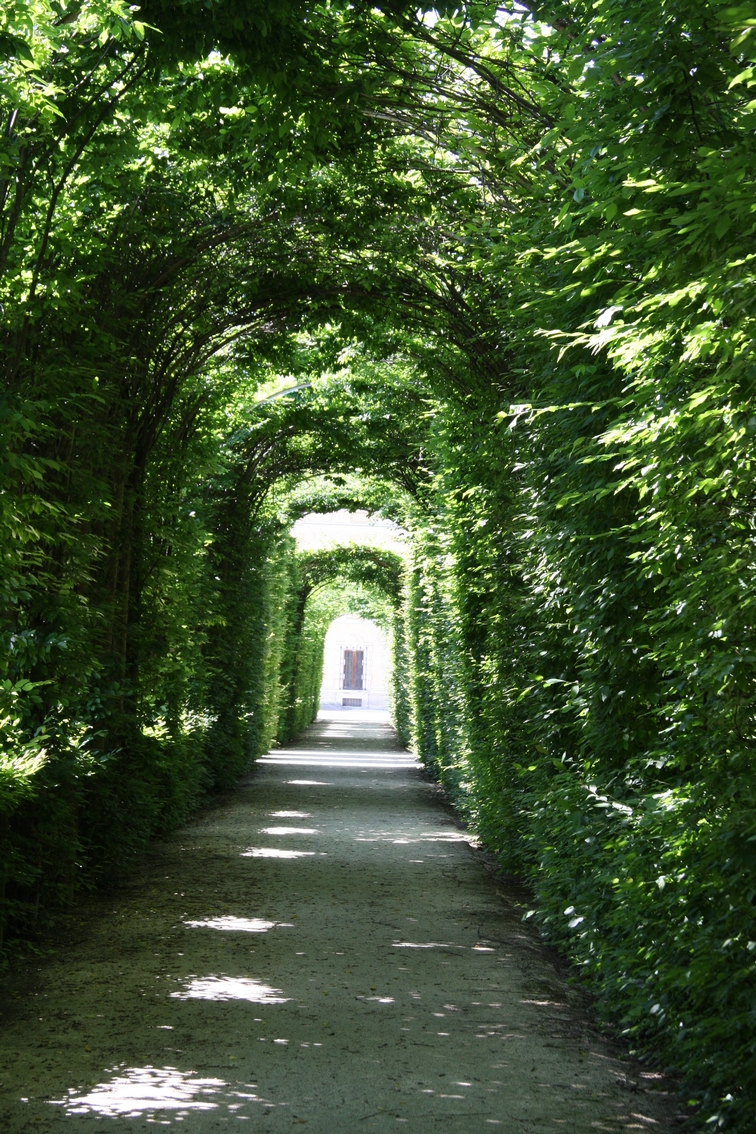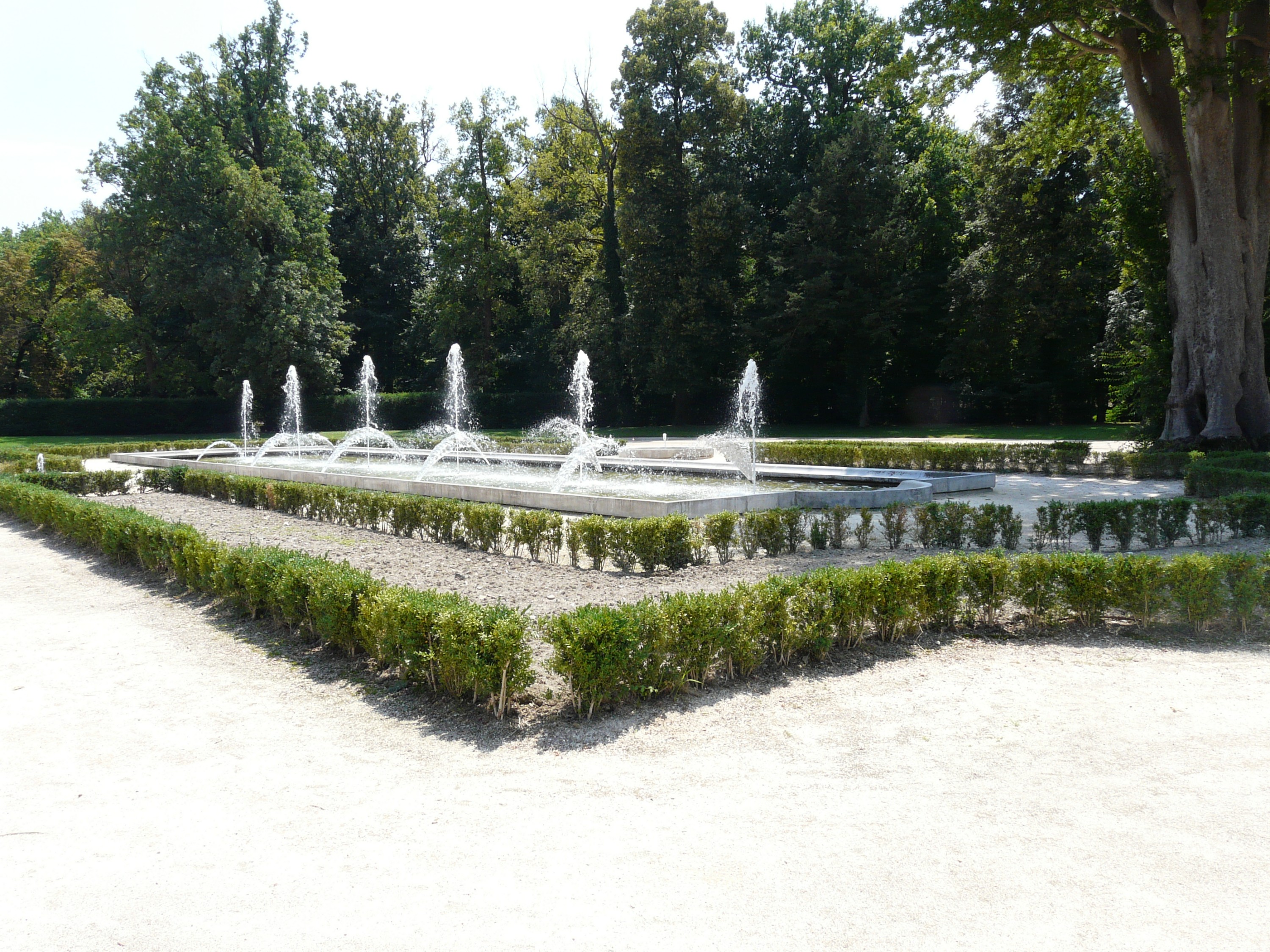
Reggia di Colorno / Palazzo Ducale di Colorno
This post is also available in:
 English (Inglese)
English (Inglese)
(ENGLISH TRANSLATION BELOW)
La Reggia di Colorno venne iniziata dal Duca Ranuccio II Farnese, nel 1660 quale omaggio alla moglie Margherita Violante di Savoia, grande appassionata di caccia alla volpe, e fu poi completata dal figlio di Ranuccio II, il Duca Francesco Farnese sino al 1719.
Il cortile d’Onore presenta ancora i caratteri che gli conferì il grande scenografo Ferdinando Galli detto il Bibiena in collaborazione con l’architetto e scultore Giuliano Mozzani di Carrara. Di quest’epoca (1690-1711) sono ancora visibili l’alta balaustra che nasconde il tetto a coppi, le quattro torri terminanti come aeree celle campanarie e le statue alla sommità dell’edificio. Tra il 1749 ed il 1765 con i nuovi Duchi Don Filippo di Borbone e la moglie Louise Elisabette, figlia di Re Luigi XV la Reggia vive il suo momento di massimo splendore. Grandi architetti quali Ennemond Alexandre Petitot e Franois Antoine Carlier la trasformarono in una delle più sontuose residenze d’Europa.
Altri importanti lavori di miglioria e restauro furono intrapresi durante il periodo napoleonico e nel corso del regno di Maria Luigia di Borbone, già Imperatrice di Francia.
All’indomani dell’Unità d’Italia subì una triste sorte. Le sale nobili vennero svuotate e gli arredi finirono in gran parte al Quirinale, ove ancora sono. Nel 1871 il palazzo, ormai completamente spoglio, venne venduto dal demanio dello Stato alla Provincia di Parma. In seguito, l’edificio venne trasformato in un colossale Manicomio. Dove sorgeva il gioiello del Parco, ovvero il parterre, vennero ricavati spazi ricreativi ed orti per gli ospiti. Tale situazione perdurò sino a quando, in seguito alla Legge Basaglia, i manicomi furono soppressi e l’edificio tornò in uso alla Provincia di Parma.
Il restauro, avviato da quella Amministrazione nel 1978, ha portato all’apertura al pubblico del Piano Nobile (nel 1990) e alla ricostruzione dell’originario parterre del Giardino alla francese della prima metà del Settecento (nel 2000). Di grande bellezza, in particolare, le sale affrescate con motivi floreali.
Il Parco Ducale
Le notizie relative ad un giardino attorno all’allora Rocca di Colorno risalgano già alla seconda metà del 1400 secolo sotto la dinastia dei Sanseverino.
Con l’avvento di Ranuccio Farnese e sua moglie Margherita Jolanda di Savoia furono realizzate le mura di cinta e i riporti di terra vicino alla Reggia, creando così un dislivello che diede luogo a un giardino alto e a un giardino basso, che presentavano i tratti caratteristici dei giardini all’italiana.
Sempre sotto i Farnese, e grazie all’opera dell’architetto di corte Ferdinando Galli, detto il Bibiena, iniziò la trasformazione da giardino all’italiana a giardino alla francese, su modello di quello di Versailles. Oltre a progettare un grande scalone per collegare il palazzo al parco, disegnò un recinto in muratura contro il quale collocare i vasi di agrumi durante la bella stagione, una nuova fontana, i parterres affiancati da lunghi pergolati, la torre delle acque, un grande orto ornamentale, una grande Aranciaia utilizzata come serra e per il ricovero delle piante nei mesi freddi.
Con l’estinzione della dinastia il giardino attraversò un periodo di decadenza e solo con l’arrivo di Filippo di Borbone i lavori ripresero, grazie all’opera di Petitot. Infine con Maria Luigia d’Austria nel 1816 il giardino venne trasformato in parco all’inglese.
Il restauro, realizzato dalla Provincia di Parma, terminato nel 2000, ha ripristinato l’originario parterre, le due gallerie verdi fenestrate di Carpinus betulus, lunghe 120 metri, che lo delimitano ai lati, e le siepi di Tilia cordata che nell’’ellisse finale si collegano a una siepe di Taxus baccata. Il parterre è composto da quattro grandi aiuole a disegno geometrico in bosso con begonie rosa, ageratum blu, tagete gialli e iris azzurri. Sono stati recuperati anche i giochi d’acqua, tra cui la fontana circolare al centro e le due fontane nella parte alte e vi sono stati collocati 46 vasi in terracotta contenenti piante di limoni, con gli stemmi dei Farnese, dei Borbone e di Maria Luigia.
Nel Segno del Giglio
Dal 1993 il Parco Ducale della Reggia di Colorno ospita, a fine aprile, “Nel Segno del Giglio”, mostra mercato del giardinaggio di qualità.
(ENGLISH; kindly translated and published by www.wetheitalians.com)
The Colorno Royal Palace was built by Duke Ranuccio II Farnese in 1660 as a tribute to his wife Violante Margherita of Savoy, a great lover of fox hunting, and was later completed by his son Ranuccio II, the Duke Francesco Farnese until 1719. The Honorable courtyard still has the characters given by the great designer Ferdinando Galli, called “Il Bibiena”, in collaboration with the architect and sculptor Giuliano Mozzani Carrara.
From this period (1690-1711) are still visible the high balustrade hiding the roof tiles, the four towers ending as aerial belfries and the statues at the top of the building. Between 1749 and 1765 the Palace was at its heyday with the new Dukes Don Philip of Bourbon and his wife Louise Elisabette, daughter of King Louis XV. Famous architects such Ennemond Alexandre Petitot and Franois Antoine Carlier transformed it into one of the most sumptuous residences in Europe.
Other important works of upgrading and renovation were undertaken during the Napoleonic period and during the reign of Marie Louise of Bourbon, former Empress of France.
After the Unification of Italy, the Royal palace suffered a sad fate. The noble rooms were emptied and furniture ended up in large part to the Quirinale, where they still are. In 1871 the building, now completely bare, was sold by the state property to the Province of Parma. Later, the building was turned into a colossal Asylum. Where there was the jewel of the park, the parterre, recreational spaces and gardens for guests were derived. This situation persisted until, following the Law Basaglia, asylums were suppressed and the building returned to the Province of Parma.
The restoration, started in 1978, led to the opening to the public of the Noble Floor (in 1990) and the reconstruction (in 2000) of the original parterre of the French garden from the first half of the eighteenth century. Of great beauty, in particular, the frescoed rooms with floral motifs.
The Ducal Garden
The news about a garden around the then Rocca of Colorno date back as early as the second half of 1400 century under the dynasty of Sanseverino.
With the advent of Duke Ranuccio II Farnese and his wife Violante Margherita of Savoy the walls and the land close to the palace were built, thus creating a gradient that gave rise to a high garden and a garden below, which showed the characteristic features of the Italian gardens.
Always under the Farnese, and thanks to the work of the court architect Ferdinando Galli, the transformation from Italian garden to French garden began, on the model of that of Versailles. In addition to designing a grand staircase to connect the building to the park, Galli drew a masonry fence against which to place the potted citrus trees during the summer, a new fountain, the parterres flanked by long pergolas, a water tower, a large ornamental vegetable garden, a great orangery used as a greenhouse and for the shelter of the plants during the cold months.
With the extinction of the dynasty, the garden went through a period of decline, and only with the arrival of Philip of Bourbon the work resumed, thanks to the effort of Petitot. Finally with Marie Louise of Austria, in 1816, the garden was transformed into an English garden.
The restoration, carried out by the Province of Parma and completed in 2000, has restored the original parterre; the two green galleries fenestrated of Carpinus betulus, 120 meters long, that surround the parterre sides; and the hedges of Tilia cordata that in the final ellipse connect to a hedge of Taxus baccata. The parterre is composed of four large flower beds in geometric boxwood with pink begonias, ageratum blue, marigold yellow and blue iris. The water games were also recovered, including the circular fountain in the center and the two fountains in the higher part; also, the restoration placed 46 terracotta vases containing lemon trees, with the coats of arms of the Farnese and Bourbon and Maria Luigia .
This post is also available in:
 English (Inglese)
English (Inglese)
Contatti
Piazza Garibaldi 21 - Colorno(PR)
0521 312545
reggiadicolorno@provincia.parma.it
Altre info
tutto l'anno, in giorni e orari stabiliti, visita guidata obbligatoria
ORARI DI VISITA GUIDATA (obbligatoria) Dicembre, Gennaio e Febbraio Feriali solo per gruppi su prenotazione Sabato, Domenica e festivi: 10, 11, 15, 16, 17 (inizio ultima visita) Marzo e Novembre Da Martedì a Venerdì: 11 e 15 Sabato, Domenica e festivi: 10, 11, 15, 16, 17 (inizio ultima visita) Chiuso: Lunedì non festivo Aprile, Maggio, Settembre e Ottobre Da Lunedì a Venerdì: 10, 11:30, 15, 16.30 Sabato: 10, 11, 15, 16, 17 (inizio ultima visita) Domenica e festivi: 10, 11, 12, 15, 16, 17, 18 (inizio ultima visita) Giugno, Luglio e Agosto Da Martedì a Venerdì: 11 e 16 Sabato, Domenica e festivi: 10, 11, 15, 16, 17 (inizio ultima visita) Chiuso: Lunedì non festivo





